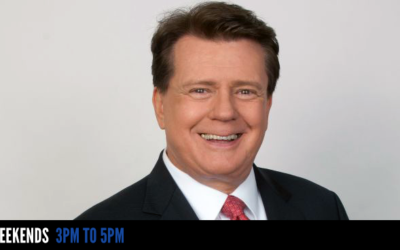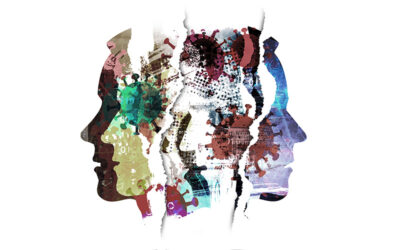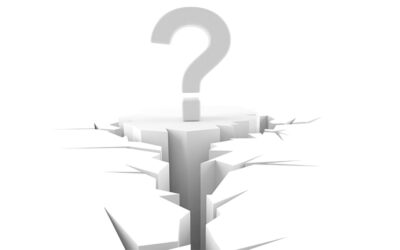I recently read through some materials given to me by a colleague. She is a broker for a company that creates health care programs for large corporations and had just returned from a “Wellness” conference sponsored by a major health insurance provider. The emphasis of the conference was on the development of wellness products and their introduction into the insurance marketplace.
The product she showed me addressed the treatment of back pain. It was beautifully packaged, with a booklet illustrating a series of seven exercises and a DVD that demonstrated how to perform them. The DVD also included information about the anatomy and physiology of back pain and some “do’s and don’ts” to support healing.
The text suggested that the reader (i.e., patient) might be surprised, or even unhappy, because he or she had not been referred to a back pain specialist by their doctor. But it went on to assert that, indeed, the doctor had done just that. “Your doctor did refer you to a specialist: You!”
According to this model, a patient with back pain does not need a medically trained specialist. Instead, this insurance company will provide “self-care tool kits” to their in-network, primary medical doctors, and advise them to present these kits to their suffering patients with back pain. No referral necessary!
The message is clear: Because back pain is one of the most common complaints seen in a doctors office, treatment requires little more than a generic prescription of exercises. This eliminates the need for chiropractors, physical therapists and acupuncturists—all highly qualified practitioners who deal with back pain on an individual basis. Instead, these patients will be directed to medical doctors who have no expertise in the treatment of their specific conditions. This panacea will be sold as “wellness” or “preventative care.”
The Modern Health Care Paradigm
In his seminal work, The Structure of Scientific Revolutions, Thomas Kuhn describes the evolutionary nature of paradigms. A paradigm, according to Kuhn, is a framework that allows cultures and societies– and the individuals of which they are comprised–to understand and experience their world. Paradigms are constructed systems of knowledge that both arise from and shape the world they describe. These systems are fluid–adopted and rejected based upon how well they serve to answer the questions deemed important to particular societies at particular historical moments.
During the Middle Ages in Europe, for example, it was believed that the Earth was the center of the cosmos. This squared with personal experience. The Earth seemed stationary while the sun, planets, and stars moved through the sky above with predictable regularity. This belief also fit into the biblical notion that man was God’s central creation.
But the model yielded cumbersome maps that had to include corrective lines (deferents) and circles (epicycles) suggesting that planets sometimes stopped or moved backwards. As more data was collected, aided by the invention of the telescope in 1609, ever more “corrections” had to be inserted into the maps. Over time, these maps bore less and less resemblance to the observed world.
Despite protestations from the Church, the heliocentric model was finally adopted. This resolved most of the mapping problems, enabling scientists to probe more deeply into the nature of the physical universe. It became the new cosmological paradigm.
For the past one hundred years, (allopathic) biomedicine has been the culturally dominant paradigm for healing. Great strides in pharmacology (antibiotics, inoculation, etc.) and surgery have supported this legitimacy. In order to pay for these effective and expensive procedures, our health insurance system co-evolved.
Since the 1990’s, however, we have witnessed a surge of interest in complementary (aka alternative) medicine. This includes chiropractic, acupuncture, naturopathy, massage and other treatment systems. The reason for this increase in demand is that many of the diseases of our era are not responsive to traditional biomedicine. While biomedicine is great for emergencies (appendectomies or bullet removal) and also for microbial infections (cholera, staph, polio), it often proves ineffective in the treatment of many chronic respiratory, gastrointestinal and musculoskeletal diseases. It is in this realm that many of the alternative approaches shine.
Kuhn’s work has given us a powerful tool to critique evolving thought systems. He describes a point when the dominant paradigm begins to break down under the weight of its own advances.
This is a critical juncture in this discussion, so I’ll clarify. When a paradigm is fully accepted—its competition essentially eliminated–research and development proceeds apace and a large body of knowledge accumulates. Over time that data itself may challenge and slowly undermine the tight hold the paradigm has on how we describe reality. In this case, the advances of modern medicine–fantastic technologies able to probe ever more deeply into the human body–are still unable to “cure” many of our most common ailments. This inability spotlights the limited nature of the old paradigm, sowing doubt among the believers and making room for new descriptions of “reality” from outliers in the field.
Kuhn goes on to describe how those who are deeply committed to the old paradigm—be they scientists, medical doctors, politicians, financiers or even the media—will try to prop up the old system as it loses credibility. Kuhn calls this the “resolution of ambiguity.” We saw it in the Middle Ages with the addition of epicycles and deferents onto the cosmological map. In physics we see it with the addition of “constants”–numerical values inserted into equations to make theories agree with observed phenomena. And we are seeing it now, as modern biomedicine and its financial backer, the health insurance industry, struggle to assimilate “wellness models” into their old paradigm–one invested in reactive, non-holistic strategies.
And so we see the simplistic approaches to back pain that were described at the beginning of this article. We hear radio commercials from Kaiser Permanente with banjos playing and a woman coyly describing how the doctors at Kaiser prescribe an ancient healing method, marche, for all of their patients. We find out, after many invocations of this treatment, that “marche” means “walking”…in French. This is meant to be funny, but it’s also enlightening. We, the patients, the consumers of health care, are to be re-assured that our doctors and insurance companies are on the cutting edge of the “wellness revolution.”
Because our biomedical model is so deeply internalized, it is almost impossible for believers in that paradigm to make room for new ideas. There is too much at stake. For many, their power, prestige, and careers depend on the old order. For others, it is just the way the world is. A lifetime of indoctrination by schools, television, movies, and advertisements continuously re-enforce this reality. New paradigms, Kuhn says, cannot be fully assimilated until the defenders of the old ways of thinking literally die off.
We are in the midst of a paradigm shift.
The biomedical model has long asserted its hegemony over health and healing; a model that is now being challenged by alternative practitioners and their patients. But rather than reach out and truly integrate these complementary modalities, biomedicine is attempting to “resolve ambiguity” by suggesting that each person can be their own specialist when it comes to areas beyond established medical expertise. This dismisses the full range of alternative therapies. You don’t need a chiropractor. Just do these seven exercises. You don’t need an acupuncturist. Just walk (marche!) three times a week. You don’t need a naturopath or a nutritionist. Just take this list of healthy foods, and eat!
My belief is that the current collision of an imploding health insurance system with the availability of low cost, holistic, and effective approaches to healing and wellness will tip us into a new paradigm. This new paradigm will include traditional biomedicine with its miraculous technologies along with time tested natural therapies that are aimed at the restoration of balance—structural, biochemical, emotional, and energetic. But it must include them not as eye-catching “products,” but at the skilled provider level.
According to Kuhn’s theory, paradigms generally begin their shift at the fringes of power. It was Copernicus, an administrator in a distant monastery in Poland, who introduced the heliocentric model. Later, when Galileo went to present this theory to the Pope in Rome, he was banished for life. And it will be the representatives of complementary/alternative medicine rather than the powerful moneyed interests of the health insurance and medical industries, who will usher in the real wellness revolution.
The new model will be integrative. It will express powerfully those things it can do, and humbly accept what it cannot. It will place the patient at the center of the healing process, with the doctor in the role of guide.
Stay tuned for Part Three of this series where we will explore what the new paradigm might look like.
Dr. Ricky Fishman has been a San Francisco based Chiropractor since 1986. In addition to treating patients with musculoskeletal complaints, he has been actively involved with a variety of wellness companies working toward the transformation of health care delivery for the 21st century.
Copyright 2013 Ricky Fishman
.
[email protected] www.rickyfishman.com













Thank YOU for another insightful article.
R
On Sat, Aug 3, 2013 at 4:34 PM, Ricky’s Riffs: Random Thoughts on Travel, Education, Health, and the World
Couldn’t agree with you more! My hopes and personal experience in the wellness field also proves more interest and desire for education in health, healing, but most importantly in preventative medicine. People are more proactive than ever because of how sick we are as a nation, and this is most evident in the corporate world where stress is at an all time high.
This is incredibly insightful article referring to an industry I am not very aware of. As a 20-something, this helps me better understand the challenges of alternative medicine and the basic structure of the biomedical model.
The historical references from Kuhn’s work bring an important component to the table. Understanding the history helps create a platform for the future of medicine.
This is a remarkable read and should be shared with the masses!
Emily, thanks so much for your comments. My goal has been to educate people about areas of health care that most know little about. Most (but not all!) of us have health insurance but don’t understand the framework in which our care is embedded. It is my goal to let the “masses” know so please feel free to spread this piece around and also, if you have not already, read Part One of the series that addresses specifically the health insurance business piece of this grand equation.
Thanks Ricky for another well researched and thoughtful article on our health care system. It will be interesting to see how the Affordable Health Care Act (“ObamaCare”) will move us toward a more integrative approach to prevention and treatment.
Jon, thanks for reading and for your comment. I am afraid I do not have great hope for Obamacare bringing us a more integrative approach. Unfortunately, Obama has put the insurance companies in charge of fixing our ailing system. In my mind it is like putting the wolves in charge of guarding the chicken coop. How would one expect those who have contributed so greatly to the problems to fix those problems. Most of the new policies offered on the exhanges will be for catastophic coverage and the complementary/alternative/integrative modalities will be pushed to the sidelines. The solutions offered consist a few exercises, walking (marche!) and now the newest one from Kaiser that I heard just yesterday–hugs! Well we all know the value of a hug, but should it really be included as a part of our health care benefit??
Those of us who suffer from chronic back pain have probably tried all the exercises, stretches, hot baths, massage therapy, chiropractic care, etc. to alleviate our pain. Not all back pain is created equally and a one size fits all system will certainly not work for everyone.
Thank you Ricky for another well written and informative article.
The biomedical paradigm is indeed shaking at the foundations, frequently on its own empirical terms. See, eg., the results of an experiment conducted on a tai chi chuan master by the Stanford Univ biomechanics lab: http://www.mercurynews.com/search/ci_5807018